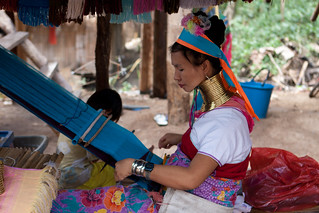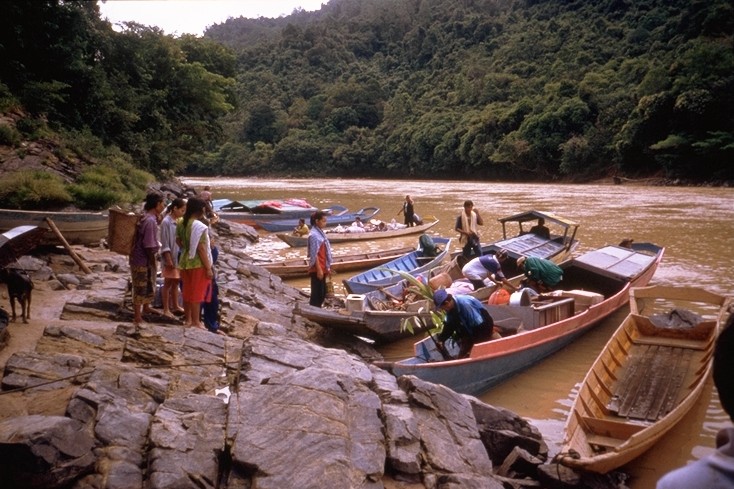 The Kayan people of Borneo are, like the Kenyah, often spoken of under the title Bahau or referred to as the orang ulu – ‘up river people’. They are called this as they inhabit the banks of the Baram, Bintulu and Mahakam rivers amongst others in Malaysian Sarawak and Indonesian East Kalimantan, Borneo. These rivers provide the possibility for vital transport, sustenance and trade for the Kayan population which, in the late 20th century, numbered around 27,000.
The Kayan people of Borneo are, like the Kenyah, often spoken of under the title Bahau or referred to as the orang ulu – ‘up river people’. They are called this as they inhabit the banks of the Baram, Bintulu and Mahakam rivers amongst others in Malaysian Sarawak and Indonesian East Kalimantan, Borneo. These rivers provide the possibility for vital transport, sustenance and trade for the Kayan population which, in the late 20th century, numbered around 27,000.
The Kayan speak languages similar to the Kenyah belonging to the Malayo-Polynesian branch of the Austronesian language family. They traditionally operate a subsistence economy based on shifting cultivation, supplementing the staple crops made available for harvesting using this technique with meat hunted and fished from the surrounding area and with gathered forest foods. Alongside these subsistence activities the Kayan used to practice a number of notable customs which have become largely extinct. These included an intensely elaborate religion with a large pantheon of gods, the practice of institutions such as augury (divination) and shamanism and also head hunting. Raids tailored toward the goal of taking heads were once common as the Kayan sought to damage their traditional foes the Land Dayaks and the Ibans. Fortunately the Kayan have been able to maintain some of their traditional skills as craftsmen and are especially well known as master smiths and carvers.
Like the Kenyah the Kayan consider the head of the Kayan river to be their point of origin. However, reports seem to suggest that this group seems to have come to the area more recently than their neighbours with whom they share much in common. It is thought that for much of their existence in a recognisable form the Kayan were a warlike and mobile conquering group from the South East of the region. It is reported that they actively enslaved other indigenous groups such as the Murut and their ferocity was well known and feared. At the turn of the 20th century however, after the Kayan had migrated to their more recent location, these aspects of Kayan culture were radically challenged. After the Brooke intervention*, which saw the deaths of prodigious numbers of Kayan and Kenyah people, this group were brought further under the control of the colonial Brooke regime which operated for just over one hundred years. This period of cultural subjugation was followed by decades of missionary proselytizing and assimilationist policies as the Kayan endured a great deal of interference.
Many Kayan have abandoned or been forced to abandon their traditional lifestyles, leaving their longhouses empty and populating coastal cities. Those who have chosen to retain their traditional lifeways are currently involved in struggles against interventions such as the Baram Dam. Threatening to flood 38,900 hectares of traditionally land to which the Kayan and other groups have customary rights and to displace 20,000 of these people, this affront to these peoples’ culture and livelihoods is indicative of their continuing struggle. Their resistance is indicative of their resolve.
* Morrison, H, 1968, Sarawak. Donald Moore Press Ltd, Singapore.



